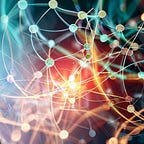Criticisms of the theory of free energy or the “Bayesian brain” by Karl Friston
1. The assumption of a “Bayesian brain” is a strong simplification.
While Bayesian formalism provides an elegant means of modeling probabilities and predictions, the neural mechanisms in the brain are much more complex. There are many nonlinear dynamics, distributed encodings, and feedbacks that are not directly represented in Bayesian theory.
2. The assumption of uncertainty minimization as the primary goal is questionable
Combining the physical principle of free energy with Bayesian inference, Friston postulates that organisms strive to minimize uncertainty. However, this theory represents a reversal of causality: the minimization of uncertainty is more a consequence of actions and adjustments, not their primary intention. Organisms evolve and act to survive and reproduce. The reduction of uncertainty results as a side effect of successful adaptation strategies.
3. The direct transfer of physical principles to biological systems is problematic
The application of the concept of free energy to living organisms overlooks fundamental differences between inanimate matter and living beings. Biological systems often follow principles that may seem inefficient from a purely physical point of view, but are evolutionarily beneficial. The complexity and redundancy in biological systems often serves to ensure robustness and adaptability.
4. Mathematical abstraction makes empirical tests more difficult
The theory of free energy is formulated in a very abstract and mathematically complex way. This makes direct empirical tests of the predictions difficult. The relationship between the abstract information-theoretical constructs and the concrete neurobiological processes is often unclear. There is a danger that the theory will become circular or too flexible and can hardly be falsified.
Bayesian formalism and the principle of free energy alone are not enough to explain the entire functioning of the brain. They merely provide a normative principle for modeling probabilities and predictions. The trial-and-error strategy for adapting the models is only one aspect of the brain’s activity.
The brain is a highly complex, distributed, non-linear dynamic system. Many processes such as perception, attention, learning, memory, decision-making, etc. run in parallel and interact. The one-sided focus on Bayesian inference and energy minimization falls short here. A comprehensive theory would have to integrate all these aspects and be able to better map the neurobiological mechanisms.
In biological systems such as the brain, reduction should be primarily aimed at biological principles:
1. Evolutionary perspective: Biological systems are the result of evolutionary processes that are not necessarily geared towards optimization in the physical sense.
2. Emergence: Biological systems often exhibit emergent properties that cannot simply be reduced to basic physical principles.
3. Functional adaptation: The functioning of biological systems is often determined more by their adaptive role in the environment than by physical efficiency or uncertainty minimization.
4. Complexity and redundancy: Biological systems often exhibit a complexity and redundancy that may seem inefficient from a purely physical point of view, but makes biological sense.
5. Context-dependence: Biological processes are often highly context-dependent and cannot always be explained by universal physical laws.
The attempt to reduce biological systems primarily to physical principles, as is sometimes done in Friston’s theory, risks overlooking or misinterpreting important biological aspects. A more appropriate reduction would attempt to identify the basic biological principles that govern brain function. This could include concepts such as neuronal plasticity, signal transmission, network dynamics, homeostasis, and adaptive information processing.
There is a need to take a bio-centric rather than a physicocentric approach to the study of biological systems. This does not mean that physical principles are irrelevant, but that they must be interpreted and applied in the context of biological reality.
Karl Friston’s Free Energy Principle has not yet played a very prominent role in the practical development of artificial intelligence (AI). Nevertheless, there are some areas and approaches in AI research in which concepts of the free energy principle are taken up:
1. Uncertainty Modeling in Deep Learning
2. Active learning
3. Reinforcement Learning
4. Architectural Approaches for Hierarchical Neural Networks
However, these concepts are usually only used implicitly and are not referred to as the “free energy principle”. The theory is often too abstract and complex for AI practitioners.
The brain is not a mathematical or physical organ, but a biological one. To understand it, you have to look for biological principles, not mathematical ones. Mathematical or physical principles can then be used to describe individual aspects.
These are first and foremost autocatalysis, which results in autopoiesis, the structure density principle, which results in causal forces and motion, and the trial-and-error principle, through which adaptation and development are possible.
Reconstructing the evolution of the brain, these principles are as follows:
- Autocatalysis and autopoiesis: Nervous systems are characterized by self-reinforcing chemical processes. This leads to the development of more complex neuronal structures.
- Structure density principle: The emergence of local structure densities through the establishment of imbalances resulted in places of high reaction probabilities, resulting in gradients that guide action.
- Trial-and-error principle: The feedback of errors leads to more adapted actions and systems.
The interaction of these principles leads to a highly complex overall system, the functioning of which cannot be described by a single simple theory such as Friston’s Free Energy Principle. The reduction of uncertainty may be an observable phenomenon, but it is not the driving force behind the development and function of the brain. Rather, it is a byproduct of the complex biological processes that are geared towards survival and adaptation.
Friston’s theory, as elegant as it may be, runs the risk of misunderstanding the true nature of biological systems by applying a simplistic, physically inspired explanation to the complex reality of life. A more comprehensive theory of the brain must take into account the unique properties of living systems and explain how these emergent phenomena arise from basic biological processes.
